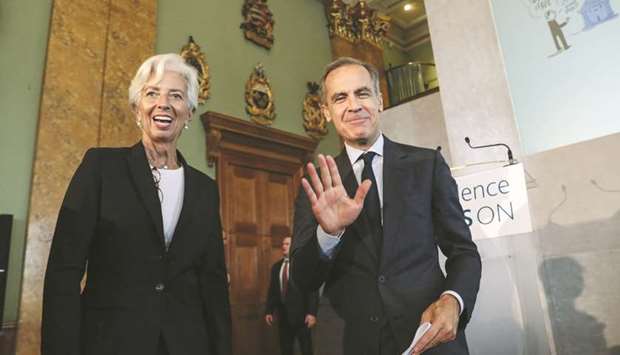Britain’s economy grew at its slowest pace since 2013 in the 12 months after last year’s Brexit vote, data showed yesterday, painting a subdued picture as the Bank of England prepares to raise interest rates for the first time in a decade.
The world’s fifth-biggest economy was just 1.5% bigger than a year earlier in the second quarter, the weakest year-on-year expansion in more than four years and down from a rate of 1.8% in the first three months of the year.
Britain’s Office for National Statistics had previously estimated second-quarter growth at 1.7%, and none of the economists polled by Reuters before the data had expected such a big downward revision.
Yesterday’s data also showed a monthly fall in output for the services sector in July, boding poorly for third-quarter growth.
Sterling fell after the data and prompted some economists to reconsider their prediction of a rate hike at the end of the BoE’s next meeting on November 2.
“I’m sticking to my call for a hike in November, but I’m much more nervous now than I was prior to this data release,” Scotiabank’s Alan Clarke wrote in a note to clients.
However, the weak data might not stand in the way of the BoE raising interest rates from their record low 0.25%.
BoE Governor Mark Carney said yesterday the economy was on track for a rate hike “in the relatively near term”, two weeks after the BoE jolted markets by flagging a rate rise “in the coming months,” despite weak growth this year.
The BoE has downgraded its estimate of how fast Britain’s economy can grow without generating excess inflation because of the impact of Brexit, so yesterday’s weaker growth picture is not necessarily fatal for the chances of a November rate rise.
A major annual set of revisions of Britain’s official data showed show stronger business investment, net exports and household savings, but also a larger current account deficit.
Britain sucked in £23.2bn ($31.0bn) of foreign finance in the three months to June, far above economists’ £16bn pound forecast, and the first-quarter deficit was revised up to £22.3bn from 16.9bn.
Business investment grew by an annual 2.5% in the second quarter, compared with an earlier estimate that it had stagnated, and households’ savings ratio was a relatively healthy 5.4% in the second quarter.
Net exports contributed 0.4 percentage points to quarterly growth, compared with earlier estimates of zero, and an inflationary squeeze on consumers may be easing, with real household disposable income up 1.6% in the latest quarter, the most since 2015.
Nonetheless, the broader picture remains one of consumers under pressure from a steep rise in inflation caused by the fall in the pound since last year’s Brexit vote.
Disposable income has fallen year-on-year for the last four quarters, the longest period since 2011.
Overall quarterly GDP growth was unrevised at 0.3%, and the services sector — which makes up 80% on the economy — contracted by 0.2% in July.
Separately, mortgage lender Nationwide said house prices — a bellwether for consumer demand — rose at their slowest rate in four years this month, and the Bank of England said mortgage approvals fell in August.
“It would be unprecedented for the central bank to tighten policy with the data pointing to such anaemic economic growth,” Chris Williamson, chief economist at financial data company IHS Markit, said.
“However, policymakers continue to fuel expectations that interest rates will rise soon in response to higher-than-expected inflation,” he said.

IMF managing director Christine Lagarde (left) and BoE governor Mark Carney react during the BoE’s ‘Independence u2014 20 Years On’ conference at Fishmongers’ Hall in the City of London yesterday. Carney said yesterday the economy was on track for a rate hike u201cin the relatively near term.u201d
